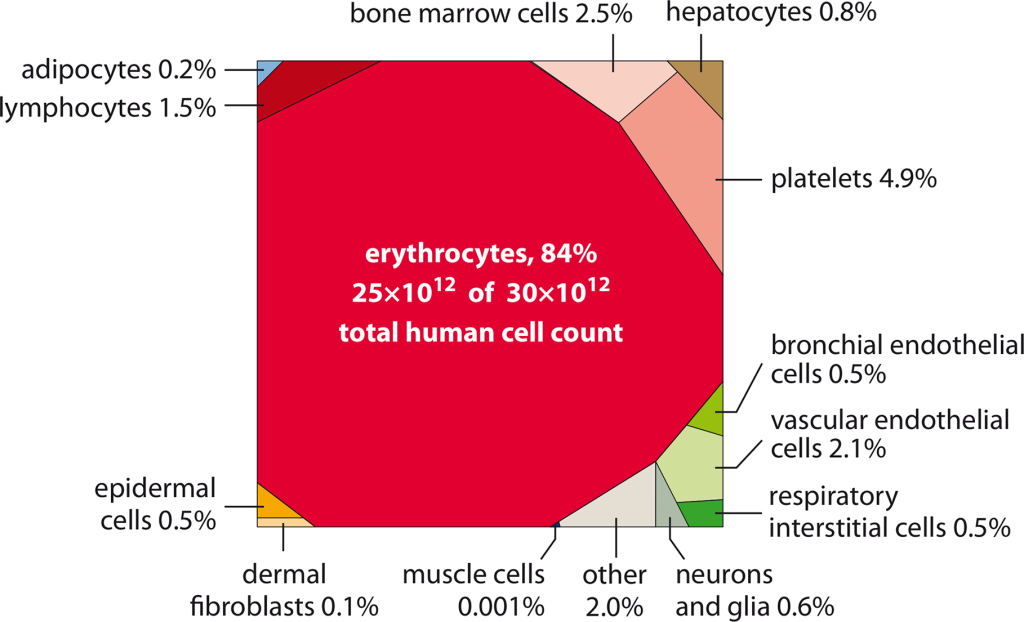5.3 Boffin questions
 How many cells are in your body?
How many cells are in your body?
- You may have seen various estimates of the total number of cells in the human body in textbooks and online. A common estimate is 30,000,000,000,000 (30 trillion or 3 × 1013) cells. Have you ever thought about how these numbers are estimated? See if you can come up with a similar estimate for your own body.
Hints: First, estimate your volume. You can assume 1 kg takes up about 1 l. Now convert your volume to m3.
Mammalian cells typically have a volume ranging from 103 to 104 µm3.
How many cells is that?
Your answer should be a range based on the volume range. Does the range encompass the common estimate stated above? - How much of us is human? Based on Sender et al. (2016), what percentage of our body weight on average is composed of bacteria?
A more accurate estimate
Your estimate above is a great starting point to think about this problem but is likely to be very inaccurate due to the assumptions made regarding both the weight-to-volume ratio and range of volumes for mammalian cells.
Different cell types of different volumes will account for different proportions of the total cell population. Erythrocytes (red blood cells) are much smaller than most cells and there are typically about 5–6 × 1012 cells per litre of blood. With a blood volume of around 5 L on average that means there are around 2.5–3 × 1013 erythrocytes in an average human. This makes them the largest contributor to the overall human cell count, as shown in the next figure.

Sender et al. (2016) have attempted a more accurate estimate of the total cell number by estimating the relative contribution of each of the major cell types. It is worth looking at their paper to see how they made their calculations. They have also estimated the total number of bacteria in an average human, which has been the subject of a lot of controversy.
Help us improve this resource
We would like to invite you to participate in a study of user perception and engagement with this open educational eBook, Foundations of Biomedical Science.
The survey will take about 10 minutes of your time and will help us enormously in improving this resource and other free, open education resources.
Click on the link to go to the survey:

